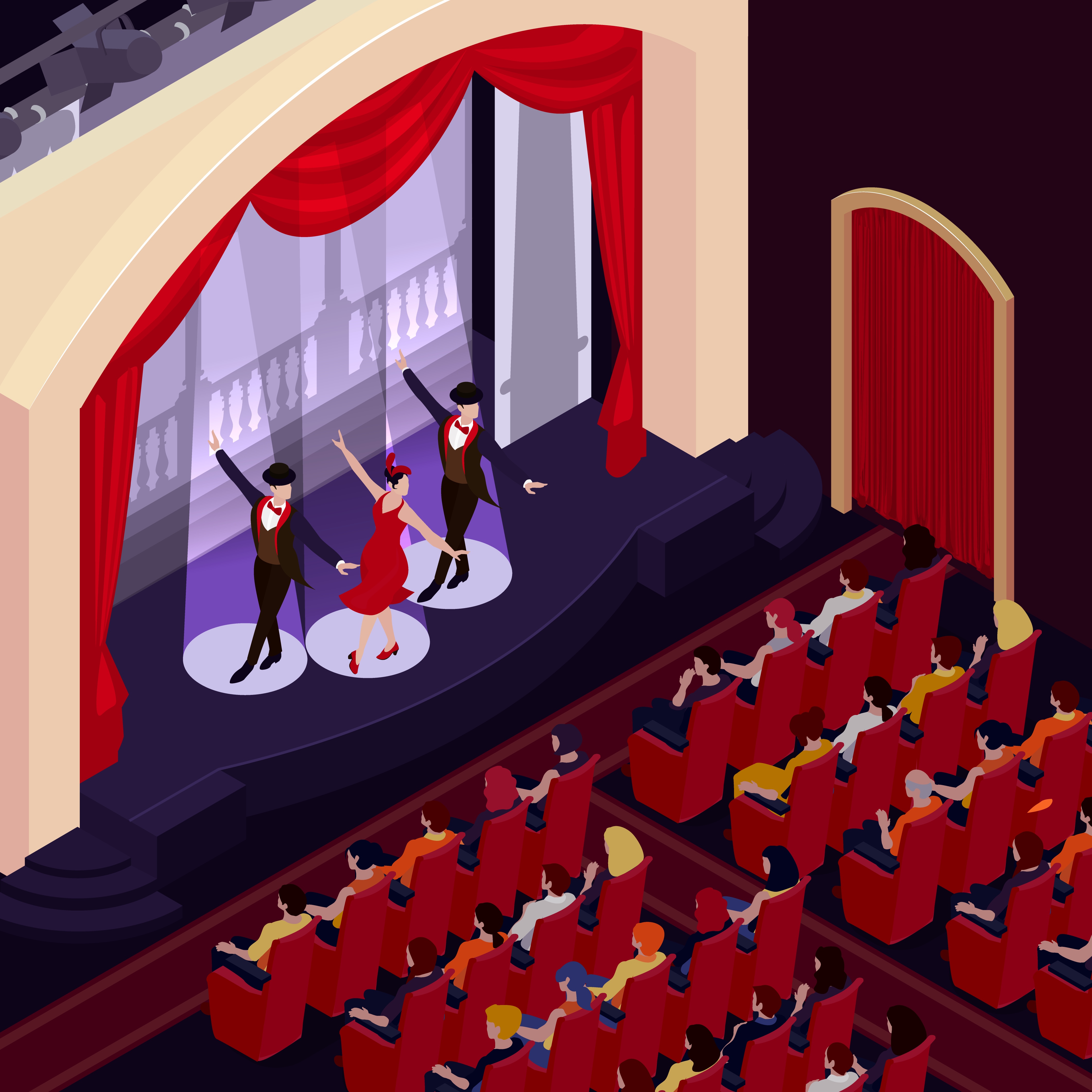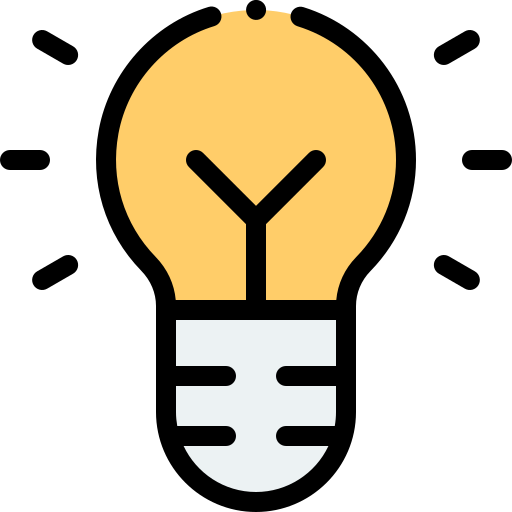
What is tragic, what is comic? – A Comparison of Dramas
Objective:
The learners identify the fundamental differences and similarities between tragedy and comedy as central forms of drama. The objective is to develop a reflective understanding of the characteristics, impact, and function of both genres on the audience. Learners should be able to analyze humorous elements and their effects in various media, and reflect on the significance of laughter and profound emotional impact for critical thought.
Content and Methods:
This worksheet addresses the definitions of "tragic" and "comic" and focuses on comparing these two dramatic forms. It includes video analysis to identify humorous elements and types of humor. A mind map helps collect characteristics of comedy. Using an example, typical comedy features like a light-hearted tone, a happy ending, witty language, and misunderstandings are explored. The worksheet also examines various comedic devices (verbal, situational, character comedy) with examples. It concludes with a thought experiment and a debate on the function and impact of comedy and tragedy. Methods include video analysis, brainstorming, mind mapping, text analysis, partner work, group work and discussion.
Competencies:
- Learners identify and describe the characteristic features of comedies and tragedies.
- They analyze humorous elements and types of humor in different media.
- They recognize the function and impact of comedy on the audience.
- They critically engage with the significance of laughter and profound emotional impact for deeper thought.
- They develop arguments for the lasting impact of both comedy and tragedy.
Target Audience and Level:
Grade 7 and up
55 other teachers use this template
Target group and level
Grade 7 and up
Subjects
What is tragic, what is comic? – A Comparison of Dramas


Tragedy and Comedy
Tragedy or comedy - two central forms of drama that, at first glance, could hardly be more different. But what exactly does "tragic" mean? And what makes something "comic"? The lines aren't always clear, as both forms grapple with human conflicts, emotions and life situations in their own ways. While one can provoke thought or deeply affect us, the other invites laughter - yet often, there's more to both than meets the eye. A comparison helps us better understand the particular characteristics of each genre and more closely examine their impact on the audience.
📋 Exercise: Watch the video carefully and make bullet points for these questions:
- What makes this funny?
- What kind of humor is this?
✒️ Write here
📋 Brainstorming: Create a mindmap, write down what you associate with 'comedy'.
🖌️ Comedy
📋 Exercise: Read the following text carefully and then answer the questions about the text.
Discovering Humor in "Scrawl" by Mark Shulman
"Scrawl" by Mark Shulman is a funny book about a boy named Tod Munn. Tod is not just any boy; he is known as a bully. But as we read, we find out that Tod is actually very smart. He hides his cleverness so he can keep his tough-guy image at school. The book is written like a diary, where Tod writes down his thoughts while he sits in detention. This diary format helps us see inside Tod's mind and learn about his life.
The story is funny because Tod has a unique way of describing things. Even when he talks about school, where he feels like an outsider, he uses humor to show how he sees the world. His funny descriptions make us laugh and help us understand his feelings. For example, Tod talks about glasses in a way that starts off sounding serious but ends up being humorous, showing his bully side.
"Scrawl" is a comedy because it uses humor to talk about serious topics. It shows how Tod feels trapped by his life but still manages to make readers smile. This mix of serious and funny moments is a key feature of a comedy. Comedies often use humor to talk about problems, helping us see things in a new way. In "Scrawl," we laugh at Tod's jokes but also think about his struggles.
Comedies usually have characters who find themselves in tricky situations. They use humor to deal with these problems, just like Tod does. Tod's story shows that even if life is tough, humor can make things feel better. This is why "Scrawl" is a comedy—it shows us how Tod uses laughter to cope with being misunderstood and feeling powerless.
Even though Tod feels alone, his funny thoughts help him connect with readers. We learn that humor can be a powerful tool. This makes "Scrawl" a special comedy that teaches us important lessons through laughter.
📋 Select the correct answer.
👥 Exercise Partnerwork: Work with your classmate next to you. For each type of funny stuff listed below, come up with an example from a movie, a TV show, a joke, or just make up a short situation yourselves. Briefly explain what makes it funny:
Talking Funny (Verbal Comedy):
- Wordplay / Double Meanings: This is when a word or phrase has two meanings, and both make sense in a funny way.
- Example: "I'm the boss here, the cheese!" (like a boss is in charge, and cheese is in charge of a pizza).
- Exaggerating (Hyperboles): Making something sound way bigger or more extreme than it really is.
- Example: "I'm so tired, I could fall asleep standing up and keep dreaming!" (No one is that tired, but it's funny).
- Mix-ups with Words: When someone uses the wrong word by mistake, and it sounds silly or causes confusion.
- Example: Someone means to say "pasta" but accidentally says "prostate."
- Repeating Sentences or Words: Saying the same thing over and over, which can get annoying but also be really funny.
- Example: "I told you so! I told you SO!"
Situation Funny (Situational Comedy):
- Mixing Up People or Things: When characters think someone is someone else, or they confuse objects.
- Talking Past Each Other: When two people are talking but they don't understand each other because they're thinking about different things.
- We Know More Than the Characters: This is when you, the audience, know something important that the characters in the movie or show don't. This can make you laugh because you see what's about to happen.
- Slapstick / Body Comedy: Funny actions where people fall down, run into things, or do silly physical stuff.
- Example: Slipping on a banana peel, or running head-first into a wall.
Character Funny (Character Comedy):
- Exaggerating What Characters are Like: When a character's main personality trait is made super big and over-the-top.
- Example: Someone who is super stingy, or someone who is extremely shy.
- Opposites Attract (for laughs): When two characters are totally different (like a really loud person and a very quiet person) and their differences make funny situations.
✒️ Write here.
NOTE FOR TEACHER - SAMPLE SOLUTIONS:
Verbal Comedy
Puns / Double Meanings
- Example: In a scene, a baker says to his apprentice: "If you mess up here, you'll really get one baked!"
- What's funny about it: The phrase "to get one baked" (einen gebacken kriegen) is a double entendre – literally it means "to get a slap," but in the context of the bakery, it sounds like a joke about actual baking.
Exaggerations (Hyperboles)
- Example: A student says: "I had to study so much, my brain was smoking like a chimney!"
- What's funny about it: The extreme exaggeration of the situation (a smoking brain) creates an absurd, funny image.
Misunderstandings due to wrong words
- Example: Someone says at the doctor's office: "I think my pasta is inflamed."
- What's funny about it: The confusion of "prostate" with "pasta" is embarrassing and surprising, making it comical.
Repetitions of sentences or words
- Example: A character constantly trips and says each time: "I'm fine, I'm fine, I'm really totally fine!"
- What's funny about it: The constant repetition makes the scene exaggerated and humorously emphasizes the character's helplessness.
Situational Comedy
Mistaken identities (people, objects)
- Example: Two friends pick someone up from the airport and accidentally give an overly enthusiastic greeting to a complete stranger.
- What's funny about it: The wrong person is drawn into an absurd situation, leading to comedy.
Misunderstandings in communication
- Example: A: "I fed my neighbor's dog." B: "You fed the neighbor? Why would you do that?"
- What's funny about it: A and B are talking past each other; the misunderstanding is based on the unclear sentence structure.
Audience's information advantage
- Example: In a series, a character hides in the closet, and another character is searching for their shoes exactly there – the audience knows it, the character doesn't.
- What's funny about it: The suspense and anticipation of the discovery make the situation comical.
Slapstick / physical comedy
- Example: A character tries to walk coolly through a doorway but bumps into the glass door they thought was open.
- What's funny about it: The sudden, uncontrolled movement and mishap trigger laughter – a typical slapstick scene.
Character Comedy
Exaggeration of character traits
- Example: An extremely stingy person brings their own fork to a restaurant to save on cutlery costs.
- What's funny about it: The exaggerated portrayal of a trait leads to an absurd, funny action.
Contrasts between characters
- Example: A hyperactive teacher teaches alongside a teacher who almost falls asleep while talking.
- What's funny about it: The extreme difference between the two leads to many comical misunderstandings and reactions.

The function of comedy – laughter with meaning?
👥 Thought experiment in the learning group: Imagine there were only tragedies. What would be different? Why do we need comedies?
✒️ Take notes.
📋 Reading Exercise: Read the following text carefully, then work on the Matching Task.
Types of Plays: Tragedy and Comedy
A play (or drama) is one of the three main types of literature, along with stories (like novels) and poems. What makes a play special is that it's meant to be performed on a stage. The story usually unfolds through what the characters say to each other.
Inside plays, there are two main kinds: tragedy and comedy. They are very different in what they try to achieve, what they're about, how the characters are set up, how they sound, and how they make the audience feel.
Tragedy
Tragedy is the older type of play and used to be thought of as more important. It started way back in ancient Greece and grew out of special ceremonies honoring a god named Dionysus.
What they're about:
- Tragedies deal with serious, important problems that often involve big life questions, right and wrong, or society.
- They focus on a main character (often called a "tragic hero") who is usually someone important, like a king, a noble, or a wise person.
- This main character gets into a problem they can't solve because of their own actions, a personal flaw, or outside forces (like fate or the gods).
- This problem always leads to a terrible ending, usually the main character's downfall, death, or complete failure.
- Big ideas in tragedies include guilt, responsibility, fate, fairness, human mistakes, or hubris (when someone thinks they're better than everyone else or even gods).
How they're built:
- Old tragedies often have five parts (like chapters):
- Beginning: Introduces where and when it takes place, the main people, and the main problem.
- Building Up: The problem gets bigger and more intense.
- Turning Point: The moment where the hero's fate takes a major change, usually for the worse.
- Falling Action: The results of that turning point become clear, and the hero's failure starts to show.
- Disaster: The main problem ends with the hero's downfall.
- The language is often fancy and dramatic, and in older times, it was often written in poetry.
- Tragedies want to make the audience feel strong emotions like "fear and pity." This feeling is supposed to help them "cleanse their souls" (a process called catharsis), which was an idea from an old Greek thinker named Aristotle.
Examples of Tragedies:
- Oedipus Rex by Sophocles
- Hamlet or Macbeth by William Shakespeare
- Faust, Part One by Johann Wolfgang von Goethe
- Intrigue and Love by Friedrich Schiller
Comedy
Comedy is a type of play that's meant to be entertaining and often makes fun of society. It also started in ancient Greece, but it wasn't seen as "high art" as much as tragedy at first. Over time, though, it became an important and respected type of play.
What they're about:
- Comedies talk about everyday problems or social issues in a light, funny way.
- The story often involves mistaken identities, misunderstandings, accidents, or tricks.
- The characters are usually regular people from everyday life; they aren't heroes or important figures like in tragedies.
- Problems come from personal flaws, social rules, or everyday arguments between people.
- Unlike tragedies, comedies usually end happily: things get sorted out, couples get together, and social rules are made fun of or fixed.
- Comedies don't just entertain; they also often criticize society's problems, rules, or people in charge.
How they're built:
- Comedies can also have five acts, but they often follow the structure less strictly.
- The language is usually everyday, clever, and full of wordplay, irony, and sarcasm.
- Characters are often types of people (like the stingy person, the joker, the trickster), which helps create funny situations.
- The goal of comedy is to make the audience laugh, but also to make them think.
Examples of Comedies:
- The Imaginary Invalid by Molière
- A Midsummer Night's Dream by William Shakespeare
- Minna von Barnhelm by Gotthold Ephraim Lessing
- The Physicists by Friedrich Dürrenmatt (sometimes also seen as a dark comedy)
Differences Between Tragedy and Comedy
The main differences between tragedy and comedy are how they handle problems and how they make the audience feel:
- Tragedy shows serious problems with a sad ending to make people feel deep emotions and think deeply about life.
- Comedy takes similar, or even simple, problems and deals with them in a funny way, leading to a happy solution. It makes the audience laugh and entertains them.
While tragedy shows people being controlled by a greater fate, comedy shows people with their everyday weaknesses - often in an exaggerated way, but this helps us recognize and criticize them.
👥 Discussion Question for the class: Which kind of 'improvement' do you prefer? Are you more likely to think deeply through laughter or through being deeply affected?
✒️ Write your answers here.

Comedy vs. Tragedy - The Impact Debate
Prepare a debate: Divide into two groups: "Team Comedy" and "Team Tragedy." Each group gathers arguments for why their form of drama leaves a more impressive/lasting impact on the audience. Afterwards, each group presents its arguments. Register your arguements in the following table.
| Arguments for Comedy | Argumente for Tragedy |
|---|---|
NOTE FOR TEACHER: Possible Arguments
Team Comedy:
- Laughter sticks with you: People remember things they laughed at for a long time.
- Makes you think about your own mistakes: Comedy often gently pokes fun at human flaws, which can make us reflect on our own without feeling bad.
- Reduces stress: Laughter is a great way to relieve tension and makes us feel better.
- Can package serious topics lightly: Comedy can bring up important or difficult issues in a way that's easy to digest and discuss.
Team Tragedy:
- Deeper meaning: Tragedies explore really profound questions about life, death, and human nature.
- Sparks genuine empathy: They make us feel true pity and fear for the characters, helping us connect with their suffering.
- Shows existential questions of being human: Tragedies deal with big questions about our existence and purpose.
- Stays in your mind longer: The intensity of tragic events often leaves a lasting impression.
- Teaches empathy: By witnessing deep suffering, we learn to understand and share the feelings of others.
📋 Exercise: Add the other group's arguments to your table.
NOTE FOR TEACHER: Concluding discussion in plenary: "Is there a 'winner'? Or do both forms fulfill their own, important function?" Emphasize that both forms of drama are valuable and effective in their own ways.